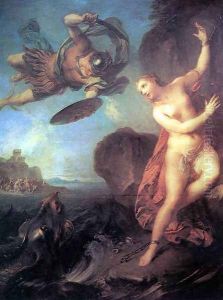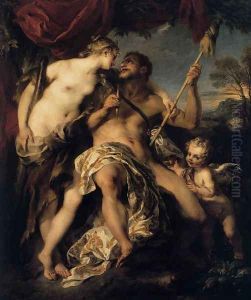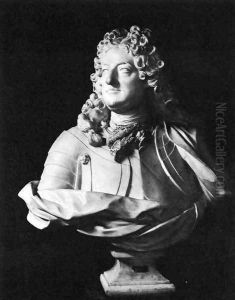Jean-Louis Lemoyne Paintings
Jean-Louis Lemoyne was a French sculptor born in Paris in 1665. He was part of a renowned family of artists and is often confused with his father, Jean-Louis Lemoyne the Elder, and his more famous brother, Jean-Baptiste Lemoyne. Jean-Louis Lemoyne the Younger, as he is sometimes called, was a representative of the late Baroque and early Rococo periods in French sculpture. His work was characterized by a refined elegance and the depiction of movement, as well as a mastery in portraying the human form with grace and expression.
Jean-Louis received his early artistic training from his father before entering the workshop of Antoine Coysevox, one of the foremost sculptors of the time. Under Coysevox's guidance, Lemoyne developed his skills and was eventually admitted to the prestigious Académie Royale de Peinture et de Sculpture in 1701. He received the title of 'professor' in 1715, which marked his acceptance as a master in the artistic community.
Throughout his career, Lemoyne created a number of notable works, including religious sculptures, funerary monuments, and decorative pieces for the royal palaces. He was particularly skilled in creating small, intricate groups in terracotta. Despite his talent and the quality of his work, Lemoyne did not achieve the same level of fame as his brother Jean-Baptiste, who became the official sculptor to King Louis XV.
Lemoyne's contributions to the decorative arts also included designs for silverware and other luxury objects, reflecting the opulent tastes of the French court during the reign of Louis XIV and beyond. His works are preserved in various museums and collections, showcasing the artistry of the late Baroque period in France.
Jean-Louis Lemoyne continued to work and teach until his death in 1755. His legacy, though overshadowed by the achievements of his brother and other contemporaries, remains an important part of the history of French sculpture, highlighting the transitional period between Baroque exuberance and Rococo delicacy.


